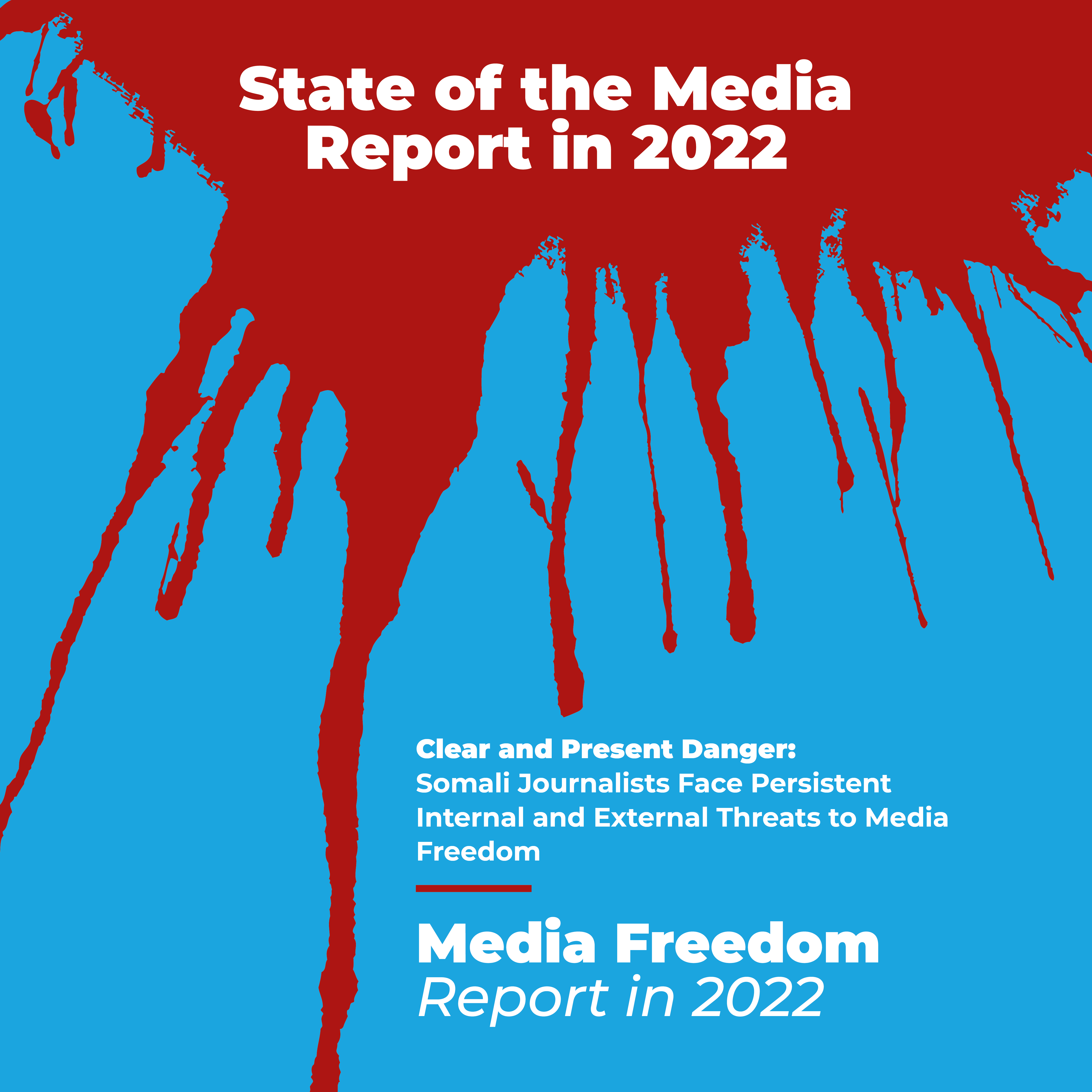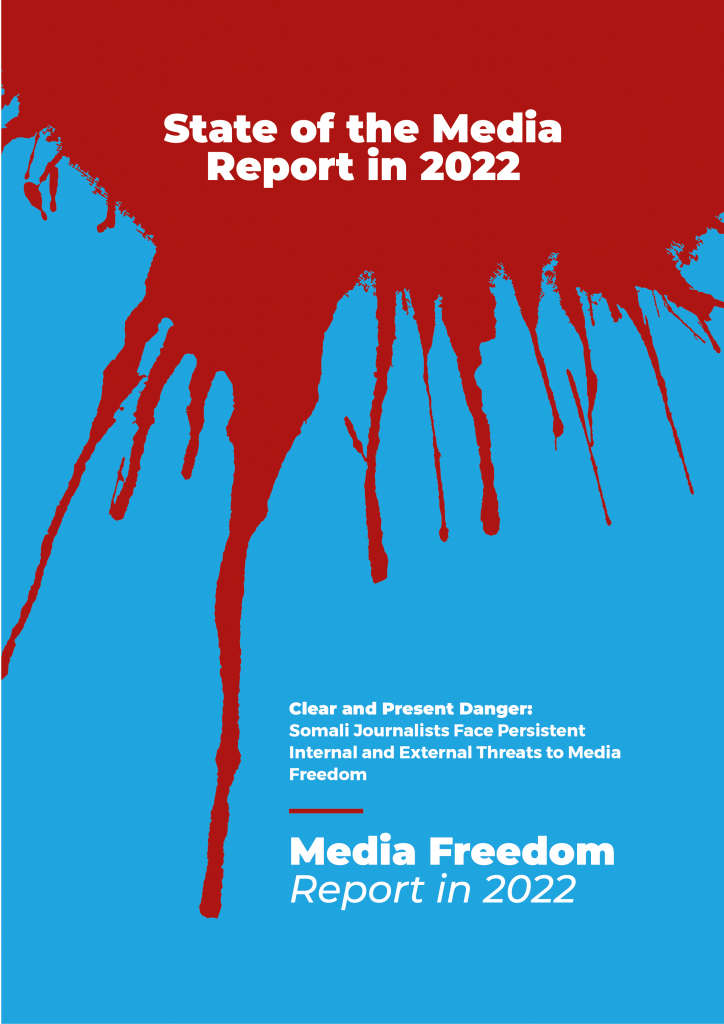The National Union of Somali Journalists (NUSOJ) today releases its highly anticipated State of Media Report which paints a disturbing picture of a journalism profession under siege on multiple fronts. The report describes how state and non-state actors wage concerted campaigns to repress journalists and violate their rights with impunity, reflecting a total disregard for media freedom in Somalia.
Entitled “Clear and Present Danger: Somali Journalists Face Persistent Internal and External Threats to Media Freedom”, the report catalogues two killings as well as 95 attacks against news media organisations and journalists that included arrests, torture, threats of violence, gender-based violence, confiscation of equipment and travel bans. The incidents took place over the course of 2022 in Mogadishu, the five Federal Member States and Somaliland.
NUSOJ Secretary General Omar Faruk Osman said the report “aims to draw attention to egregious media freedom violations and abuses as well as to raise awareness of the perpetrators and their victims. It also assesses the impact of such violations and abuses on the journalistic community and the practice of journalism in Somalia.”
In the autumn of 2022, within the space of four weeks, two broadcast journalists were killed in separate bomb blasts – one in the Hirshabelle and the other in the Banadir region. Al-Shabaab claimed responsibility for the attacks as well as for other incidents in the same regions that left six journalists with serious injuries.
Of all Somali administrations, Somaliland comes out once again as the worst jailer of journalists with 24 media practitioners arrested in different circumstances during the course of the year. In one notorious incident on 13 April, 15 media professionals were detained on a range of trumped-up charges.
The report noted significant regional variations in the pattern of repressive tactics. No incidents of journalists killed or arrested were reported in Puntland while journalists in the Banadir Region regularly faced brutal reprisals meted out by the security forces. Media professionals in Southwest, Galmudug, Hirshabelle and Jubaland were also targeted by law enforcement bodies, apparently acting on the orders of their political paymasters.
News media organisations were attacked as a result of their independent reporting – and, here again, Somaliland topped the list with three such cases reported in Hargeisa. Other attacks were documented in Hirshabelle and Jubaland, according to the State of the Media Report.
“Somalia has brilliant and brave journalists but, equally, there are dangerous and deadly forces that will seize any opportunity to throw journalists into jail, inflict violence on news men and women, and force them to comply with illegal orders. Some reporters end up paying the ultimate price for their service to society,” said Osman.
He went on to say, “In a country where journalists are killed and injured, where the right to access public information remains elusive, and where female journalists feel threatened both in and outside the newsroom, there is an urgent need for duty-bearers to end the ongoing atrocities and make journalism safe.”
Furthermore, the State of the Media report underscores that the culture of impunity associated with crimes committed against journalists continues to be one of the greatest threats to media freedom in Somalia.
In another disturbing trend, women journalists reported 28 cases of sexual and gender-based violence (SGBV) during the year, with the highest number coming from the Banadir Region. The NUSOJ report adds, “Women media professionals were also subjected to threats of rape and online harassment, often channelled through their social media accounts. It is thought that the reported cases of SGBV represent a small fraction of the true figure, since the fear of public censure deters women from speaking out or taking their complaints to the authorities.”
The socio-economic status of journalists – most of whom work for little or no pay – also serves to undermine professional, independent and credible journalism in Somalia. According to the report, “the precarious nature of journalists’ work makes them vulnerable to interference from political and business interests.” These multiple pressures lead to self-censorship and other negative coping mechanisms, including leaving the profession.


